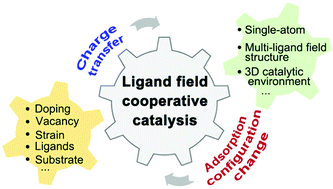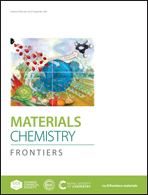A review of the synergistic effect of multi-coordination crystal fields on electrocatalysts
Abstract
The development of an accurate structure–property relationship is vital to design electrocatalysts in energy conversion and storage devices. Recent structure–property relationships are based on the static catalytic process. In realistic reactions, the local catalytic environment varies, which further regulates the catalytic performance. To establish a dynamic catalytic theory to more accurately describe the structure–property, the synergetic cooperation between active sites and their local environments should be considered. Based on the transition-metal oxide electrocatalysts composed of the specific ligand units, we developed a concept of ligand field cooperative catalysis (LFCC) including the interaction among ligand units composed with metal centers and oxygen ligands. LFCC could be achieved through either the charge transfer between different ligand units or reactant adsorption configuration modifications. We further reviewed the recent strategies to modify the cooperative effects of ligand units, e.g., introducing doping, vacancy, strain, ligand, substrate, and interface. The concept of LFCC comprehensively considers both the metal central atom and adjacent ligand units during the catalytic reaction providing insights into the design of future oxide catalysts.

- This article is part of the themed collection: 2021 Materials Chemistry Frontiers Review-type Articles


 Please wait while we load your content...
Please wait while we load your content...